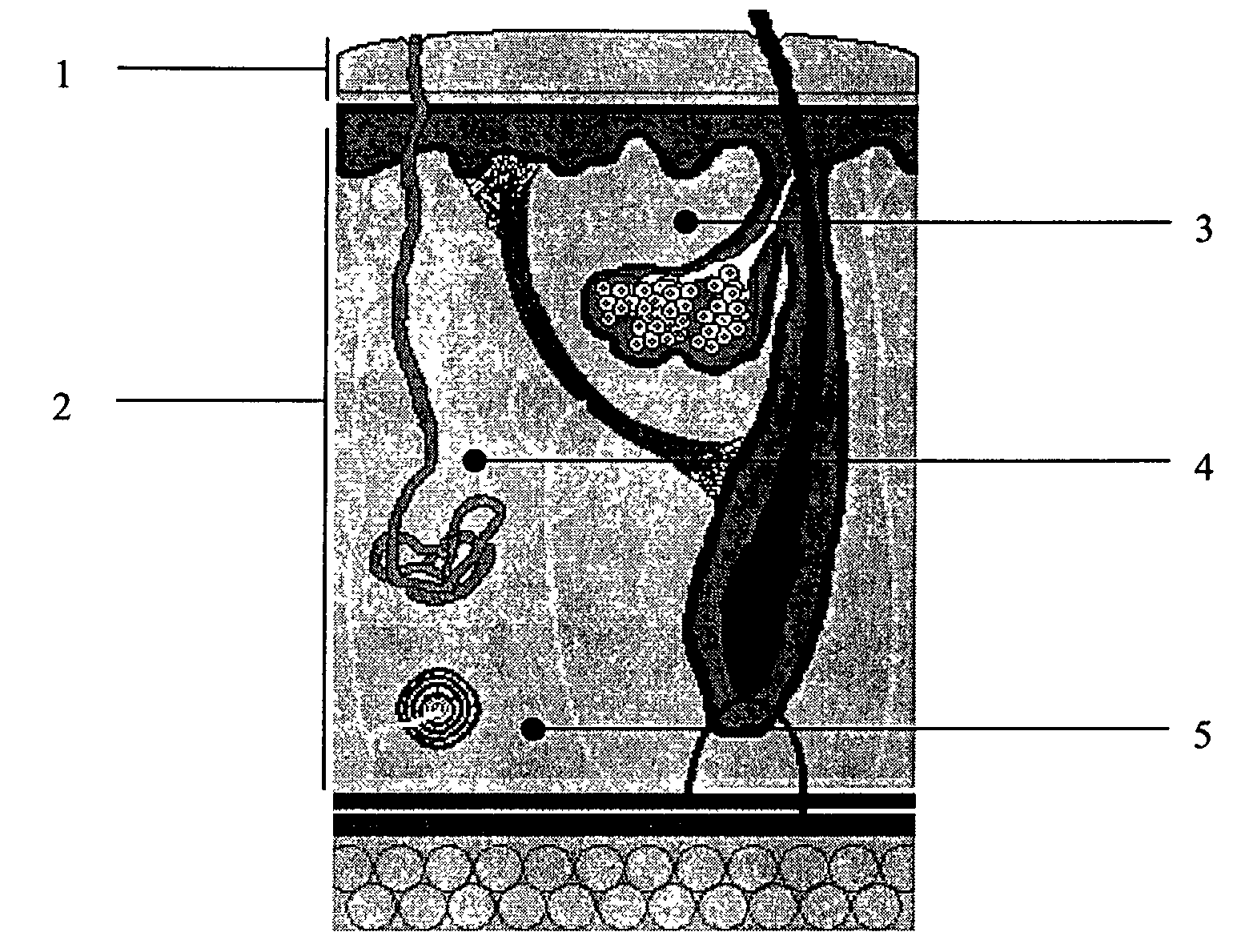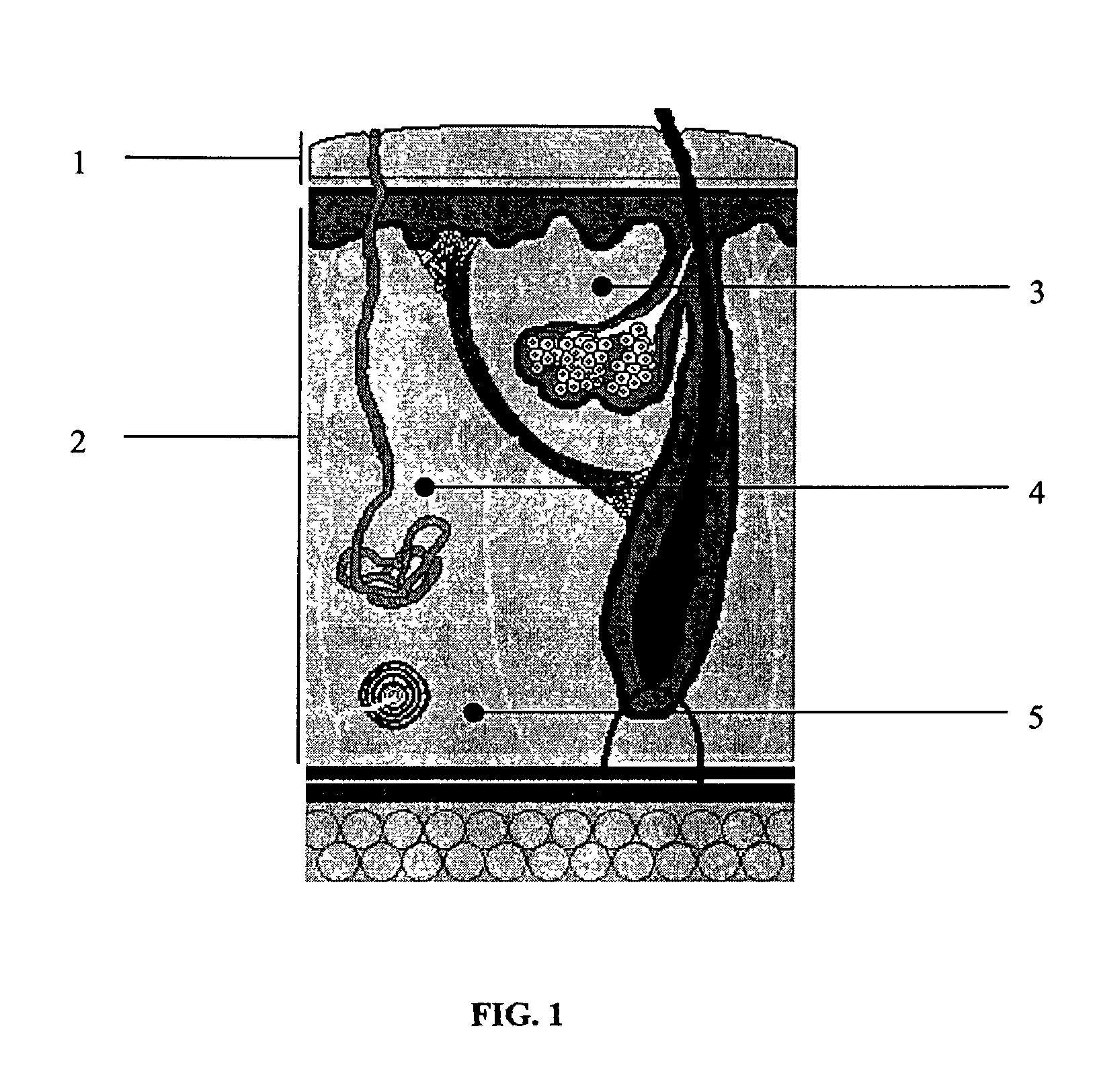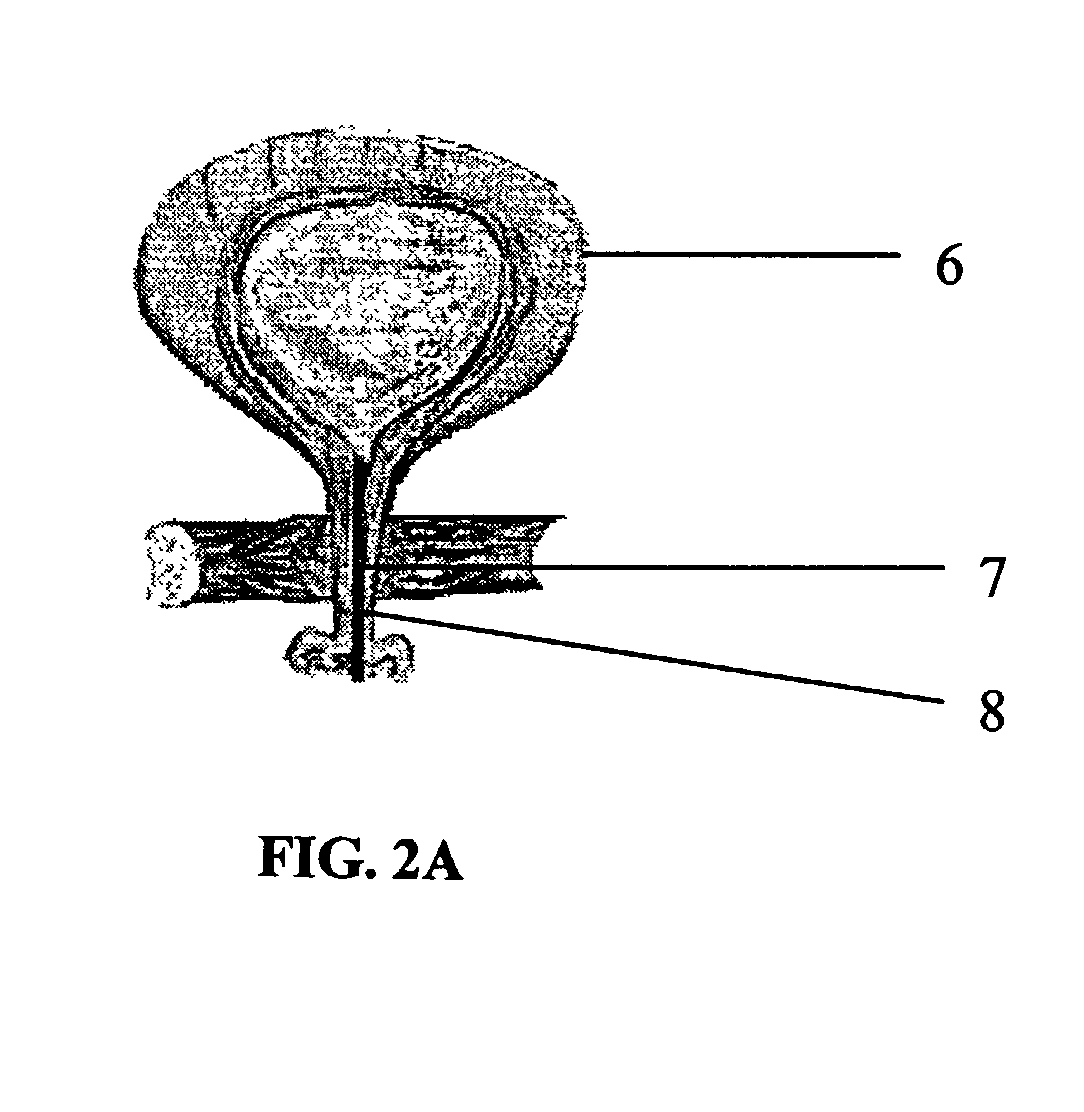Biodegradable injectable implants containing glycolic acid
a biodegradable, injectable technology, applied in the field of medical implants, can solve the problems of patients' retreatment, allergic reaction is the primary risk, and fat injection lies in the transplant process, and achieves the effect of superior flow properties
- Summary
- Abstract
- Description
- Claims
- Application Information
AI Technical Summary
Benefits of technology
Problems solved by technology
Method used
Image
Examples
example 1
Materials
[0181]The materials described below were employed in the Examples to exemplify certain preferred embodiments of the present invention. Other similar materials may also be employed.
[0182]Glycolic acid. Glypure®, a highly purified form of glycolic acid in which trace organic and inorganic impurities found in the technical grade have been minimized, was obtained from Du Pont Chemical Solutions Enterprise. Glypure® is a clear liquid solution containing 70% glycolic acid and 30% water in which the solution's total acid specification is 70%-72% and the typical free acid is 64.1%-66.7%. Glypure® exhibits a pH of 0.1 at 25° C. (77° F.) and a density of 1.25 g / cm3 at 26° C. (79° F.). In the examples, Glypure® is further diluted to 0.01%.
[0183]Polylactic acid. PURASORB® PL, a very pure poly 1-lactic acid ((3S-cis) 3,6-dimethyl-1,4-dioxane-2,5 dione homopolymer), was obtained from PURAC. PURASORB® PL is an odorless, water-insoluble white crystalline solid having a density of 1.24 kg / l...
example 2
Preparation of Injectables
[0188]The following general procedure was used to prepare the injectables described in the examples.
Phase I: Preparation of Mixtures
[0189]PLA (1 kg) was weighed and subjected to a two-step grinding process. First, the PLA (coarse polymer crystals for 1-PLA) was pulverized to a powder of: ±150 / 200μ with a verified loss of ±5%, resulting in approximately 950 g. usable processed polymer. This powder was then cold micronized (at −80° C.) under an atmosphere of N2 to obtain a powder of microspheres with diameters ranging from about 40μ to about 80μ and a mean diameter of about 60μ, by pressure of gasified N2 filtered in at a ratio of 0.20μ observing a temperature (critical) of −80° C., SCFM air @ 70° F. & 100 PSIG, steam (lb / hr) @ 700° F. & 200 PSIG, with a verified loss of ±10%, resulting in approximately 855 g. of usable processed polymer.
[0190]The spheres were then prepared with a high-emulsion technique to obtain the hydrophobic PLA spheres. The grinded PLA ...
example 3
Exemplary Formulations
[0207]A lyophilized jar contained:
[0208]
COMPONENTSMass (mg)%Glycolic Acid (GA)0.070.01Polylactic Acid (PLA)200.0040.81Hydroxypropylmethylcellulose (HPMC)118.3324.14D-Manitol apirogen170.0034.69pH Stabilizer (di-basic sodium phosphate buffer)0.500.10Surfactant (Tween 80)1.2000.24Total490.1099.99
[0209]This was activated extemporaneously with 5.5 ml of double distilled water for injectable preparations to produce the following injectable:
[0210]
COMPONENTSMass (mg)%Glycolic Acid (GA)0.070.0012Polylactic Acid (PLA)200.003.34Hydroxypropylmethylcellulose (HPMC)118.331.98D-Manitol apirogen170.002.84pH Stabilizer (di-basic sodium phosphate buffer)0.500.0083Surfactant (Tween 80)1.200.02Double distilled water5,50091.82Total5,990.10100.00
PUM
| Property | Measurement | Unit |
|---|---|---|
| molecular weight | aaaaa | aaaaa |
| molecular weight | aaaaa | aaaaa |
| melting point | aaaaa | aaaaa |
Abstract
Description
Claims
Application Information
 Login to View More
Login to View More - R&D
- Intellectual Property
- Life Sciences
- Materials
- Tech Scout
- Unparalleled Data Quality
- Higher Quality Content
- 60% Fewer Hallucinations
Browse by: Latest US Patents, China's latest patents, Technical Efficacy Thesaurus, Application Domain, Technology Topic, Popular Technical Reports.
© 2025 PatSnap. All rights reserved.Legal|Privacy policy|Modern Slavery Act Transparency Statement|Sitemap|About US| Contact US: help@patsnap.com



